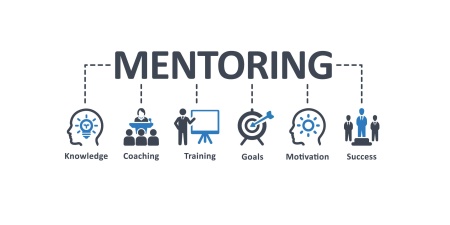Sales professionals operate within broad territories, are tasked with challenging goals and interact with a great many people. Effectiveness as a sales rep, therefore, requires organization — lots of it. As a sales manager and trainer, I am aware of the importance of organization, so I am constantly looking for ways to improve territory management. In fact, I’ve developed key tools designed to help sales reps become more organized and improve their management techniques.
The Inspiration Key
There is an effective way to inspire even the most reluctant trainees, I’ve found. Early in my career, at Bruce Breier’s seminar, The Organized Executive, I discovered how Breier teaches that being more organized is the best way to inspire busy salespeople to become more successful. One of his notable philosophies is, “It’s difficult to delight your customers if you feel disorganized at any level.”
Breier believes that leading by example is the most compelling way a manager can educate his or her team in a manner that motivates real change (in both their personal and professional lives). Leaning on Breier’s advice, I have developed 10 tools that I believe help bring out the best in sales reps by helping them develop a high level of personal organization.
The Tools
The tools are based on my personal philosophy that, “If it’s not measured, it won’t happen.” Here are the 10 core organizational tools that I believe enable sales professionals to better meet their goals:
- Weekly Call Reports – Fundamental to any professional sales portfolio is the need to track customer activity. Effective call reports are the building blocks that support all other tools. Tracking should include: (1) an account data base to collect all activity on each account; (2) the account name; (3) the goals; (4) a next step activity; and (5) an appointment date on your calendar.
These reports should be completed by the end of the work week. Sales managers should review call reports early in the weekend (I suggest Friday night). They should include in their responses to each sales rep the information about which relevant department heads should be involved and where they are needed. (Interestingly, those sales reps in the Millennial age group, who have introduced a 24/7 online approach to the workplace, make responding promptly to correspondences an important practice today.) - Setting Calendar Appointments – If appointments are made and confirmed in advance, “no show” calls will greatly diminish. When submitting expense reports to managers, reps should attach copies of their next month’s calendar. This makes management aware of upcoming appointments and helps avoid “no shows.”
- In-the-Funnel (ITF) Accounts – This is considered the home for new and penetrative opportunities. Each ITF entry should contain: (1) an account name; (2) a strategy that includes a goal (product or service), a clear next step (CNS) and a CNS appointment date; (3) the anticipated annual margin and sales dollars; and (4) the designation of “new account” or “penetration of an existing account.”
- Top Five – During the Monthly Travel Day review (explained below), the Top Five ITF opportunities are prioritized and reassessed at the end of the month.
- Dashboard – As part of the Monthly Travel Day, key indicators are measured against negotiated goals and formulated as a dashboard report. It includes: (1 & 2) annual new and penetrative margin; (3) cylinder placements; (4) annual ITF margin; (5) prospective calls; (6) Customer Value Files (CVF) (described below); and (7) new contracts.
- Sales Results – Each month, sales margins and new business margins are compared to the previous month, to the corresponding month last year and with year-to-date results.
- Customer Value Files – A CVF is a customer appraisal form used to review sales and activity history and set expectations for the next 12 months. It ensures the supplier/client relationship is progressing effectively.
- Looking Back/Looking Forward Monthly Reports – This tool, due by the close of the last day of business each month, is a summary of the past and next month’s activities. It includes: (1) closed business (new, penetration and significant growth account sales); (2) significant projects/events; (3) a summary of Dashboard numbers looking forward; (4) Top 5 ITF accounts (goal, next step, date); (5) the name of next month’s CVF presentation; and (6) significant projects/events.
- Monthly Travel Day – On a monthly basis, the sales manager arranges a field day with each sales representative. In that meeting, for an hour, they review: ITF accounts, the Top Five and Dashboard and Sales Results from the previous month. For the balance of the day they call on key existing and Top Five accounts. Each call is debriefed for possible skill improvements and next appointment strategies. I’ve noticed that sales reps (and particularly Millennials, given their communication preferences) appreciate the face-to-face time, immediate feedback and recognition of their work process that occurs in the Monthly Travel Day sessions.
- Assessment – This is a simple written record of measurement-to-goal achievement along with a things-to-do list from the monthly review.
The Impact of Organization
These 10 tools have proven effective in our organization. To illustrate a case in point, a few years ago we decided to add safety product managers. Two seasoned veterans were chosen, both with full line safety supply experience. Within three years, our sales grew by over 800 percent! When I asked what the sales reps attributed to this level of success, the product managers replied that they found it relatively easy to add new products to our core competency. They said this ease came as a result of being exposed to our company’s very disciplined sales organization program.
These managers gained basic skills through an education process that by today’s standards is slow and arduous, and one which required long periods of time to assimilate information from disparate sources. Today, however, digital tools are available that tie the many parts of the sales process together much more easily and quickly. While the job still requires a high level of organization, learning and adapting to the sales process can occur much more efficiently through the use of digital tools. They enable sophisticated scheduling and the rapid organization of ideas and data.
To support your sales team’s desire for superior achievement, I urge you integrate these 10 core organizational tools into your management plan.










